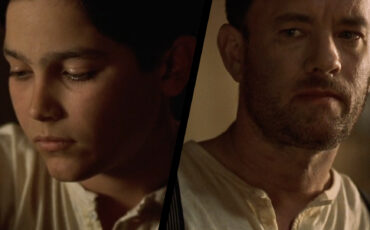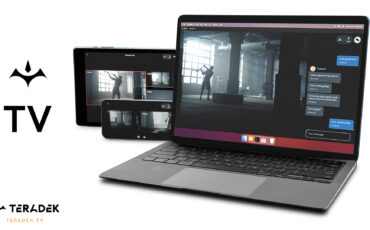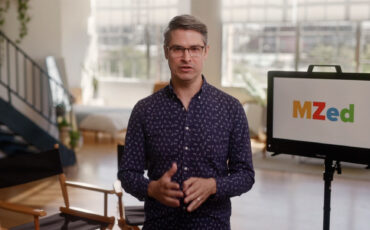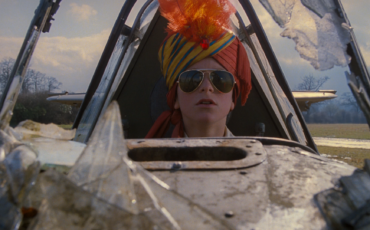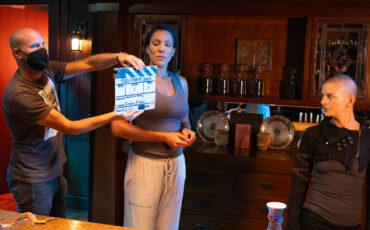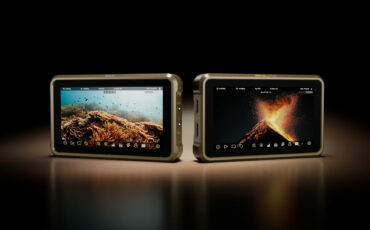Making of a Tabletop RPG Show: Goblin Mode – Interview with the Director Graham Sheldon
Goblins, fantastic creatures, dungeons, magic… To the delight of D&D lovers, the YouTube channel “Geek & Sundry” celebrates their comeback with a new original show, “Sagas of Sundry: Goblin Mode.” This tabletop role-playing game spans a huge campaign, divided into 20 episodes, around 1,5 hours each. But how do you produce something of such length and caliber? What about the storyline and keeping the suspense high? How to plan a tabletop RPG show and still let your cast improvise throughout the journey? In the video interview above, the producer and director of “Goblin Mode,” Graham Ehlers Sheldon, gives us a comprehensive look behind the scenes of this exciting project and some insights he gained during the production.
Who will find our talk interesting? Well, I believe all filmmakers, not just fans of this genre. Just imagine: only the principal photography for “Goblin Mode” took around a month! A team of at least 25 worked on everything from production design to original score. The technical setup involved multiple cameras, image-based lighting, and tons of footage to deal with. And the parent company for “Geek & Sundry” is “Legendary,” which has famously done “Dune: Part Two,” among other exciting films and projects. Some of the same people who worked on “Dune” also contributed to “Goblin Mode.” So, there are definitely filmmaking insights hidden in this production, and maybe even a new hobby to discover. Give it a go!
A tabletop RPG show: Goblin Mode
“Sagas of Sundry: Goblin Mode” is a tabletop role-playing game – a genre that has been exploding in popularity for at least a decade. In fact, as Graham explains in the interview, these shows are getting more viewers than mainstream TV networks in the United States on occasion. And yet, of course, not everyone is aware of this huge community.
In case you are new to the vast world of Dungeon and Dragons (or D&D for short), a reasonable question may arise. What does “a tabletop role-playing game” actually mean? Let us explain the example using “Goblin Mode.”

Imagine four talented comedians and actors who sit around a table and go on a joint long-form adventure that basically takes place in their heads. One of them is dungeon master (a DM or a game master) Amy Vorpahl. She helps to structure the story, guide the players, explain the quests, and take on the roles of other creatures in this fantasy world. The other three cast members each have their own character. They make decisions, go from location to location, level up, roll dice, meet and fight different beasties, overcome challenges together, and improvise a lot.
This journey spans 20 episodes, 1,5-2,5 hours each. Thanks to the long-form format, viewers can actually dive into the individual stories of these characters, discover the world, and enjoy the unexpected plot twists together with the players. New “Goblin Mode” episodes come out regularly on the YouTube channel “Geek & Sundry” and are also available in an audio version on all popular podcast platforms.
Graham Ehlers Sheldon as the director
If you have been with us for a while, then you already know Graham. He is a seasoned filmmaker – director, DP, producer – as well as a long-term CineD contributor and writer. Apart from this, Graham has multiple educational courses on our platform MZed.com. (For example, if you are about to launch your first film project, check out Graham’s “Producing from the Front,” which tackles all the challenges an independent producer will meet along the road).
Producing from the Front
Graham has vast experience producing different projects, from commercials to feature films. Yet, he is relatively new to the tabletop RPG genre, which he discovered around 3 or 4 years ago. Interestingly, Graham says that it helped him to approach “Goblin Mode” as a show that should be widely accessible to everyone – even to those who are just getting into watching RPG series. He rarely intervened as the director, only when something was unclear or when he lost the story flow.
For a filmmaker who is used to meticulously planning every shoot, Graham also admits it was a bit stressful at first because you never know what can happen next:
We have some ideas about how it might go. We have some bullet points that we all hope to get to experience together – both the crew and the cast – to see this story unfold. But there are no guarantees.
However, after some time, you get into the flow and feel immersed in the story unveiled before your eyes. Graham recalls that even with all the directional tasks on his mind, he sometimes felt like he was sitting in the audience and just enjoying the show.
Technical solutions
Graham was also the DP on “Goblin Mode”; thus, in our talk, we dive into all the technical solutions such a tabletop RPG series requires. For one, it’s a live-feeling stage show, so they had five FUJIFILM cameras rolling throughout the entirety of filming. The crew cut around between those as the adventure continued.

Images source: Graham Sheldon / Geek & Sundry 
For Graham, it was crucial to maintain the momentum and avoid disruptions caused by a camera losing power or running out of storage space. That’s why they established a comprehensive recording workflow. Each camera had an Atomos Ninja monitor on it and recorded both to a CFExpress card internally and to an external Atomos SSD.

Additionally, for cameras on sticks, they used a CineShooter+ from Kessler Crane (a motion control system) to get a wide rowing shot throughout the campaign.

Graham explains that their soundstage wasn’t huge, so they had to keep some departments offsite. To allow everyone involved to follow the story, filmmakers used a streaming platform from Teradek TV for a live stream.
The craft of preparation and improvisation
In the interview, we talk a lot about improvisation. Not only do comedians improvise their actions throughout the journey, but Amy also often has to develop the story on the spot. Interestingly, the improvisation factor also influenced the lighting approach for this show.
Graham used an image-based lighting system from Litepanels. He describes it as having buttons with different cues and scenarios in front of him and improvising along with the cast. As he didn’t know when players would get to certain places, he would often mix cues together in real-time or solo a particular actor if they were having a revelation or an internal moment.

Naturally, such improvisation also needs a lot of preparation in advance. You have to program lighting effects for different situations. You have to craft various locations where players might possibly go. You have to write several storylines and try to predict different plot twists. And yet, when the moment comes, you must also let go of your plans and let your imagination flow. Beautiful, isn’t it?
More insights about the tabletop RPG show: Goblin Mode
That was only a tiny fraction of what we discussed in the video. Graham also talks about production design (giving hints to some hidden easter eggs) and 3D renders of different environments where characters find themselves at particular moments in the story. We dive into the biggest challenges of such a production and share our thoughts on why these shows are so popular and exciting to watch. On top of that, Graham gives some priceless tips for creators who want to launch a tabletop RPG show of their own. So, go ahead and watch the full interview above!

I also personally recommend giving the tabletop RPG show “Goblin Mode” a go! Not only because it’s an interesting and unusual format from a filmmaker’s perspective but also because it’s really fun to watch. The first three episodes, alongside the short behind-the-scenes talks with the cast, are already available on “Geek & Sundry’s” YouTube.
And for those of you who are more interested in storytelling, exciting news! We recorded an interview with Amy Vorpahl, where she shares her insights into the world-building and creative writing for such a series. So, stay tuned and don’t miss it!
Please follow Graham’s advice and use our comments section to ask your questions and share your thoughts with us. After all, we’re a community, so we’re here to support you, especially if you need a tip or want to talk about your experience.
Full disclosure: MZed is owned by CineD.




